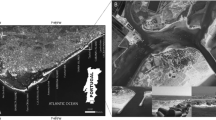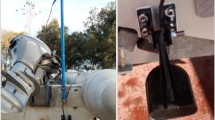Abstract
This study aims to demonstrate the capability of a low-cost echosounder for measuring the depths of high-altitude glacial lakes. A pilot survey was conducted in a shallow glacial lake associated with the Drang Drung glacier located in the Zanskar region of Ladakh, India. A bathymetric survey was carried out using Airmar P66 echosounder mounted on the inflatable Sea Eagle 380x Explorer kayak. From over 5000 data points, the maximum depth of glacial lake comes out to be 3.85 m with a mean depth of around 1.91 m. Depth estimates from the low-cost echosounder were in close agreement with manual measurements carried out at selected locations. The individual data points recorded by the echosounder were used to create 2D and 3D maps resulting in an estimation of the volume of water present in the glacial lake. Based on the collected points, the total volume of water present in the glacial lake comes out to be 0.18×106 m3. To ensure the correctness and to check the consistency in the performance of low-cost echosounder in different environments, bathymetric surveys were conducted at three different water bodies. The depth estimates at all three different test sites obtained from the instrument showed accurate results. The obtained results signify that a low-cost and simple hydrographic surveying system such as the one adopted in this study provides reliable bathymetric measurements and is suitable for water volume estimation in logistically demanding highly altitude glacial lakes.




Similar content being viewed by others
References
Arseni M, Voiculescu M, Georgescu L P, Iticescu C and Rosu A 2019 Testing different interpolation methods based on single beam echosounder river surveying. Case study: Siret River; ISPRS Int. J. Geo-Inform. 8(11) 507.
Bandini F, Olesen D, Jakobsen J, Kittel C M M, Wang S, Garcia M and Bauer-Gottwein P 2018 Bathymetry observations of inland water bodies using a tethered single-beam sonar controlled by an unmanned aerial vehicle; Hydrol. Earth Syst. Sci. 22(8) 4165–4181.
Bio A, Gonçalves J A, Magalhães A, Pinheiro J and Bastos L 2020 Combining low-cost sonar and high-precision global navigation satellite system for shallow water bathymetry; Estuar. Coast, pp. 1–12, https://doi.org/10.1007/s12237-020-00703-6.
Choi C, Kampffmeyer M, Handegard N O, Salberg A B, Brautaset O, Eikvil L and Jenssen R 2021 Semi-supervised target classification in multi-frequency echosounder data; ICES J. Mar. Sci. 78(7) 2615–2627.
Deswal S, Sharma M C, Saini R, Dalal P and Kumar P 2020 Preliminary results of hybrid bathymetry and GLOF risk assessment for Neelkanth lake, Lahaul Himalaya, India; Curr. Sci. 119(9) 1555.
Dost R J J and Mannaerts C M M 2008 Generation of lake bathymetry using sonar, satellite imagery and GIS; In: Proc. 2008 ESRI International User Conference: GIS, Geography in Action, San Diego, Florida.
Falkowski T, Ostrowski P, Siwicki P and Brach M 2017 Channel morphology changes and their relationship to valley bottom geology and human interventions: A case study from the Vistula Valley in Warsaw, Poland; Geomorphology 297 100–111.
Fromant G, Le Dantec N, Perrot Y, Floc’h F, Lebourges-Dhaussy A and Delacourt C 2021 Suspended sediment concentration field quantified from a calibrated MultiBeam EchoSounder; Appl. Acoust. 180 108107.
Halmai Á, Gradwohl-Valkay A, Czigány S, Ficsor J, Liptay Z Á, Kiss K, Lóczy D and Pirkhoffer E 2020 Applicability of a recreational-grade interferometric sonar for the bathymetric survey and monitoring of the Drava River; ISPRS Int. J. Geo-Inform. 9(3) 149.
Haritashya U K, Kargel J S, Shugar D H, Leonard G J, Strattman K, Watson C S, Shean D, Harrison S, Mandli K T and Regmi D 2018 Evolution and controls of large glacial lakes in the Nepal Himalaya; Remote Sens. 10(5) 798.
Helminen J, Linnansaari T, Bruce M, Dolson-Edge R and Curry R A 2019 Accuracy and precision of low-cost echosounder and automated data processing software for habitat mapping in a large river; Diversity 11(7) 116.
Horta J, Pacheco A, Moura D and Ferreira Ó 2014 Can recreational echosounder-chartplotter systems be used to perform accurate nearshore bathymetric surveys?; Ocean Dyn. 64(11) 1555–1567.
Huggel C, Kääb A, Haeberli W, Teysseire P and Paul F 2002 Remote sensing based assessment of hazards from glacier lake outbursts: A case study in the Swiss Alps; Canadian Geotech. J. 39(2) 316–330.
IHO 2008 Standards for hydrographic surveys; 5th edn, Monaco, Monaco: International Hydrographic Bureau.
Irigoien X, Klevjer T, Martinez U, Boyra G, Røstad A, Wittmann A C, Duarte C M, Kaartvedt S, Brierley A S and Proud R 2021 The Simrad EK60 echosounder dataset from the Malaspina circumnavigation; Scientific Data 8(1) 1–5.
Majeed U, Rashid I, Sattar A, Allen S, Stoffel M, Nüsser M and Schmidt S 2021 Recession of Gya Glacier and the 2014 glacial lake outburst flood in the Trans-Himalayan region of Ladakh, India; Sci. Total Environ. 756 144008.
Parnum I, Siwabessy J, Gavrilov A and Parsons M 2009 A comparison of single beam and multibeam sonar systems in seafloor habitat mapping; In: Proc. 3rd International Conference and Exhibition of Underwater Acoustic Measurements: Technologies and Results, Nafplion, Greece, pp. 155–162.
Quadros N D, Collier P A and Fraser C S 2008 Integration of bathymetric and topographic LiDAR: A preliminary investigation; Int. Arch. Photogram. Remote Sens. Spat. Inform. Sci. 36 1299–1304.
Rashid I and Majeed U 2018 Recent recession and potential future lake formation on Drang Drung glacier, Zanskar Himalaya, as assessed with earth observation data and glacier modelling; Environ. Earth Sci. 77(12) 1–13.
Sharma R K, Pradhan P, Sharma N P and Shrestha D G 2018 Remote sensing and in situ-based assessment of rapidly growing South Lhonak glacial lake in eastern Himalaya, India; Nat. Hazards 93(1) 393–409.
Shugar D H, Burr A, Haritashya U K, Kargel J S, Watson C S, Kennedy M C, Bevington A R, Betts R A, Harrison S and Strattman K 2020 Rapid worldwide growth of glacial lakes since 1990; Nat. Clim. Change 10(10) 939–945.
Shukla A and Qadir J 2016 Differential response of glaciers with varying debris cover extent: evidence from changing glacier parameters; Int. J. Remote Sens. 37(11) 2453–2479.
Yamasaki S, Tabusa T, Iwasaki S and Hiramatsu M 2017 Acoustic water bottom investigation with a remotely operated watercraft survey system; Progr. Earth Planet. Sci. 4(1) 1–9.
Acknowledgements
This study was funded by the Ministry of Earth Sciences (MOES) and Ministry of Education (erstwhile Ministry of Human Resource Development), Government of India, for the project titled ‘Risk Assessment of Moraine Dammed Glacier Lakes Due To Climate Change’ (Project Number: 4096) under the scheme called IMPacting Research INnovation and Technology (IMPRINT) scheme. The authors would like to thank Mr Nadeem Ahmad Najar, Mr Faisal Zahoor Jan, Mr Imtiyaz Ahmad Bhat, Mr Syed Danish Rafiq Kashani, Miss Heena Naz from the Department of Geoinformatics, University of Kashmir, for being part of the field investigations. The authors would like to thank Planet Labs for providing high-resolution Planet Scope images free of charge.
Author information
Authors and Affiliations
Contributions
RR: Conceptualization, methodology, field survey, writing – review and editing, supervision and funding; PV: Methodology, field survey, data curation, validation and writing – original draft preparation; UM and IR: Field survey, writing – review and editing.
Corresponding author
Additional information
Communicated by Aparna Shukla
Supplementary material pertaining to this article is available on the Journal of Earth System Science website (http://www.ias.ac.in/Journals/Journal_of_Earth_System_Science).
Supplementary Information
Below is the link to the electronic supplementary material.
Rights and permissions
About this article
Cite this article
Ramsankaran, R., Verma, P., Majeed, U. et al. Kayak-based low-cost hydrographic surveying system: A demonstration in high altitude proglacial lake associated with Drang Drung Glacier, Zanskar Himalaya. J Earth Syst Sci 132, 9 (2023). https://doi.org/10.1007/s12040-022-02021-w
Received:
Accepted:
Published:
DOI: https://doi.org/10.1007/s12040-022-02021-w




